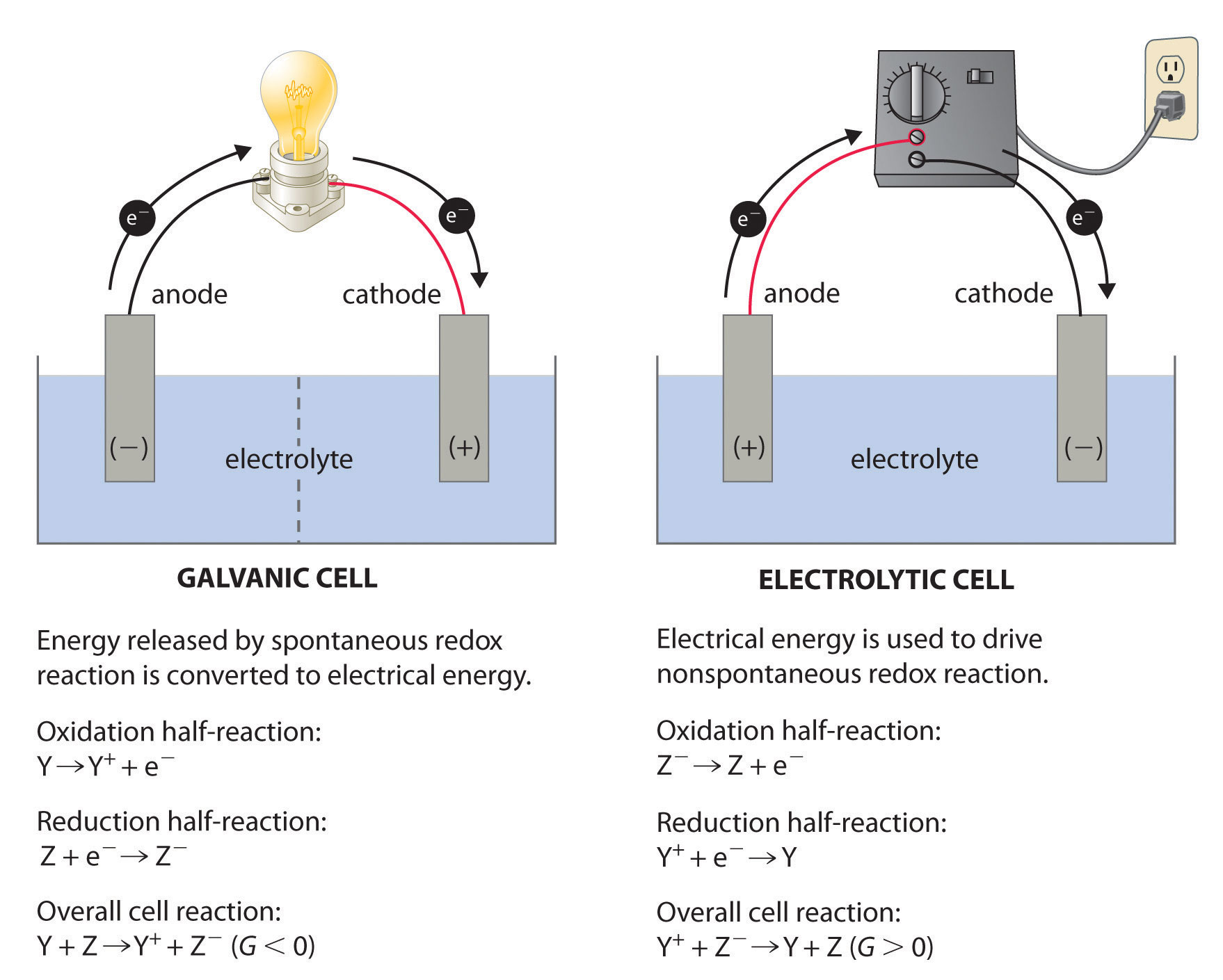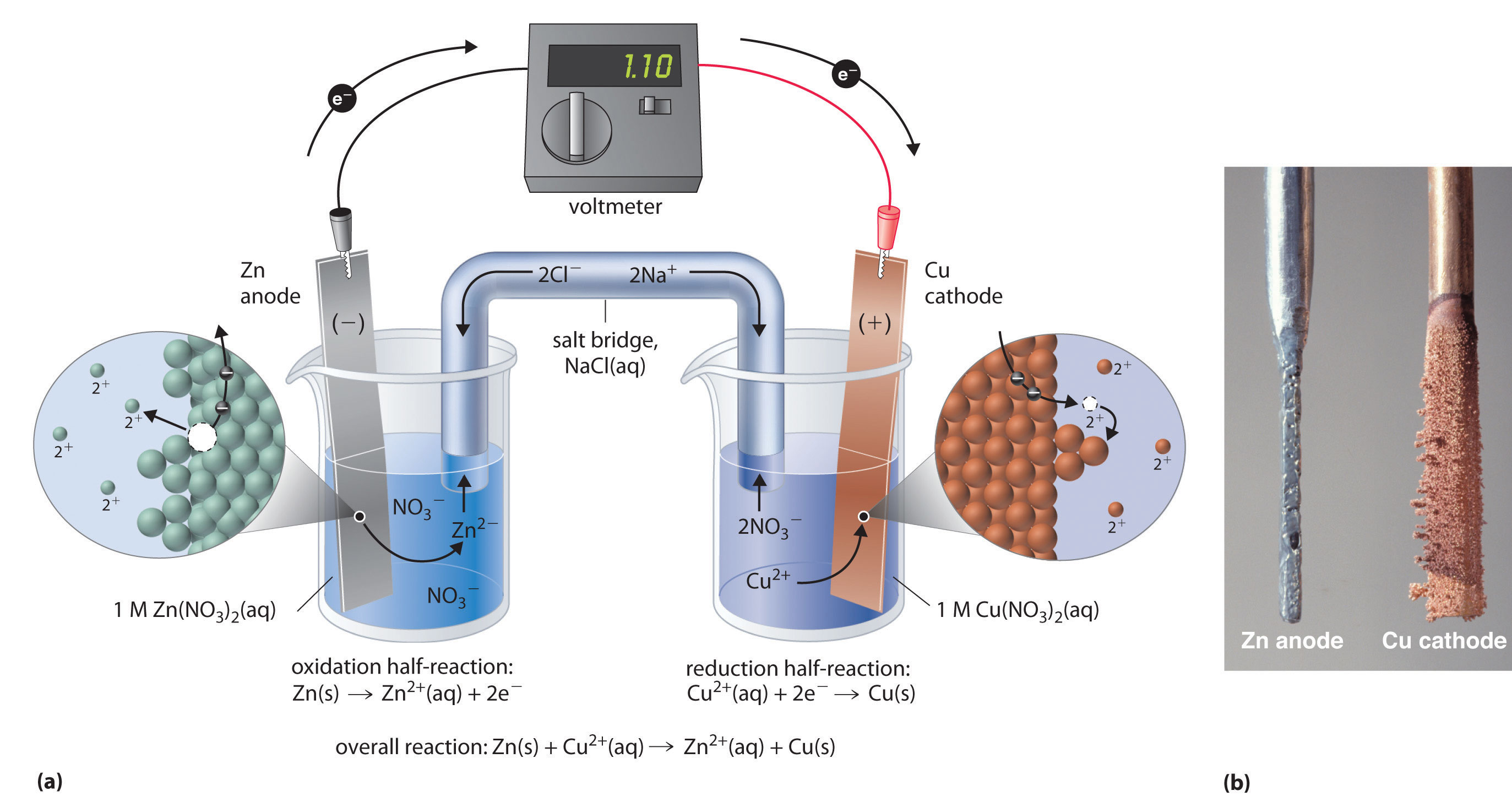Which Statement Describes the Reactions in an Electrochemical Cell
Base your answer to the following question on the diagram below. 0 For a non-spontaneous reaction within an electrochemical cell Ecell Choose.
4Oxidation and reduction both occur at the anode.

. 4Oxidation and reduction both occur at the anode. Given the reaction that occurs in an electrochemical cell. Or it is a device which is used for the conversion of the chemical energy produces.
Redox it is a chemical reaction in which there is the occurrence of oxidation and reduction of atoms of substances chemical species present in the process. Which statement describes the reactions in an electrochemical cell. DIt requires an external energy source.
E the standard cell potential. 11Which statement describes one characteristic of an operating electrolytic cell. Electrochemical cell.
3Oxidation and reduction both occur at the cathode. To predict the spontaneity of the cell reaction. 3 less than the total number of electrons gained.
Conversely a reaction with a negative cell potential proceeds spontaneously in the reverse. 2Oxidation occurs at the cathode and reduction occurs at the anode. Which statement describes the reactions in an electrochemical cell.
1Oxidation occurs at the anode and reduction occurs at the cathode. 2 equal to the total number of protons gained. Which statement describes how a salt bridge maintains electrical neutrality in the half cells of an electrochemical cell.
In an oxidation-reduction reaction the total number of electrons lost is. Recall that standard cell potentials can be calculated from potentials E 0 cell for both oxidation and reduction reactions. Answer choices Oxidation occurs at the anode and reduction occurs at the cathode Oxidation occurs at the cathode and reduction occurs at the anode.
Q the reaction coefficient. Electrochemical cells or batteries can be defined as devices capable of transforming chemical energy into electrical energy through spontaneous reactions of redox in which electron transfer occurs. It prevents the reaction from occuring spontaneously.
E E - 003 log Fe2Ni2 What is the equilibrium constant for the reaction below. 1Oxidation occurs at the anode and reduction occurs at the cathode. Oxygen lost 2 electrons and hydrogen gained one electron Question 7 30 seconds Q.
Not yet answered Points possible. It is the cell in which the chemical reaction occurs with the production of electric potential difference between the two electrodes. 2Oxidation occurs at the cathode and reduction occurs at the anode.
4 less than the total number of protons gained. Electric current is used to force electrons to flow in a non spontaneous redox reaction cell phone electrochemical cells contain two surfaces that conduct electricity electrodes which are. 1 equal to the total number of electrons gained.
CIt uses radioactive nuclides. 3Oxidation and reduction both occur at the cathode. Given the balanced ionic equation representing the reaction in an operating voltaic cell.
Fes Ni2 Fe2 Nis. Zns CuSO4aq ZnSO4aq Cus During this reaction the oxidation number of Zn changes from 1 2 to 0 2 0 to -2 3. Which statement describes the reactions in an electrochemical cell.
BIt undergoes a spontaneous redox reaction. The standard reduction potentials for two half reactions are given above. Which statement describes the reactions in an electrochemical cell A B C D 19 from FRN 570 at Stony Brook University.
The Nernst equation for a galvanic cell at 25C in which Fes reduces Ni2 is the following. To calculate the Equilibrium constant. ELECTROCHEMICAL CELLS Version 1 AIt produces electrical energy.
A positive cell potential indicates that the reaction proceeds spontaneously in the direction in which the reaction is written. 100 For a spontaneous reaction within an electrochemical cell Ecell Choose. Oxidation and reduction both occur at the cathode.
Chemistry questions and answers. N the number of electrons in the balanced reaction 100 moles of Zn and 0500 moles of Zn2 ions in 100 L of solution are used to form one half-reaction cell while 200 moles of Cu and 300 moles of Cu in 100 L of solution are used to form a second half-reaction cell. Zns Cu²aq Zn²aq Cus The flow of electrons through the external circuit in this cell is from the a Cu anode to the Zn cathode b Cu cathode to the Zn anode c Zn anode to the Cu cathode d Zn cathode to the Cu anode.
To calculate the Gibbs free energy change of the cell reaction.




0 Response to "Which Statement Describes the Reactions in an Electrochemical Cell"
Post a Comment